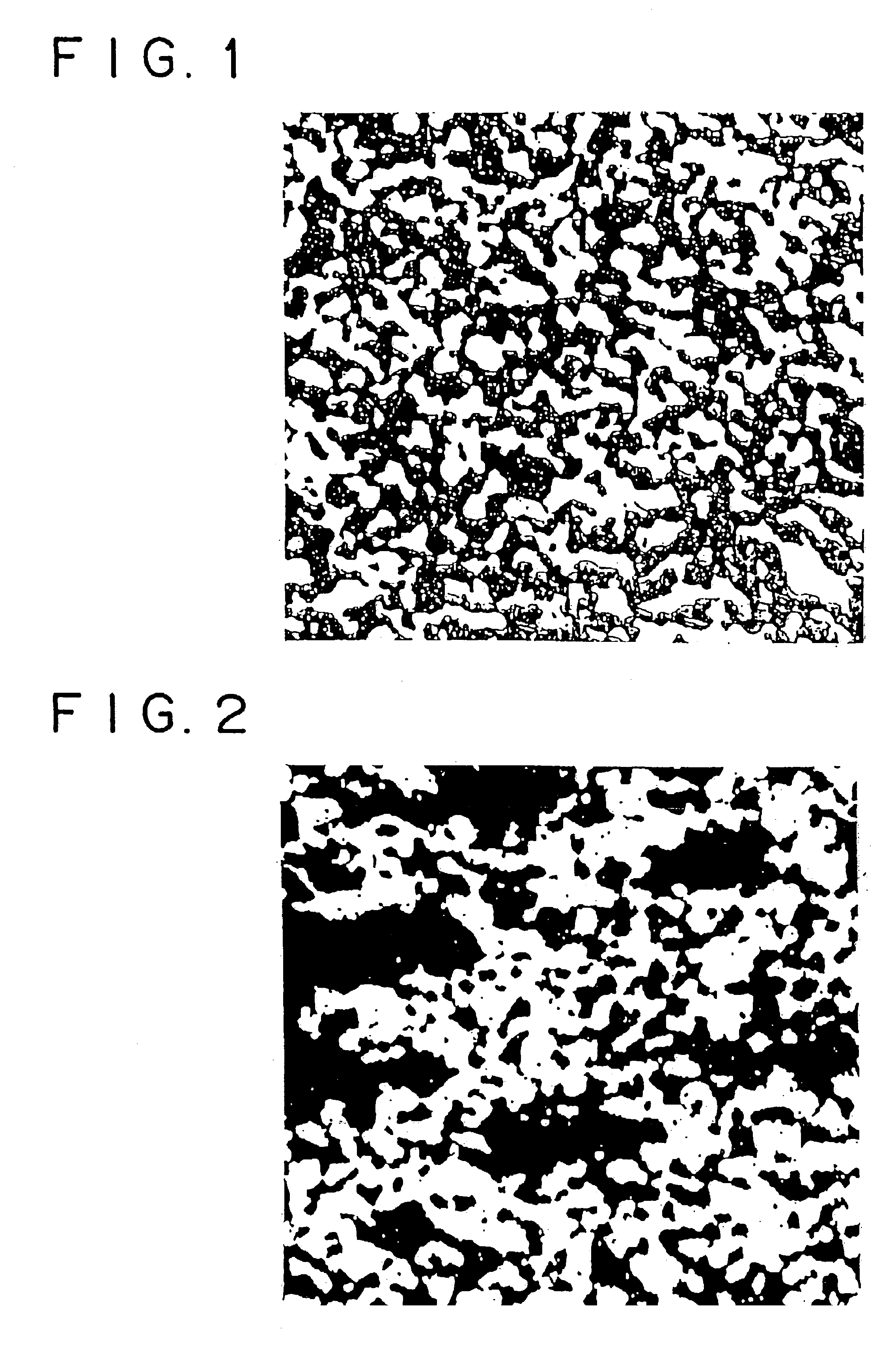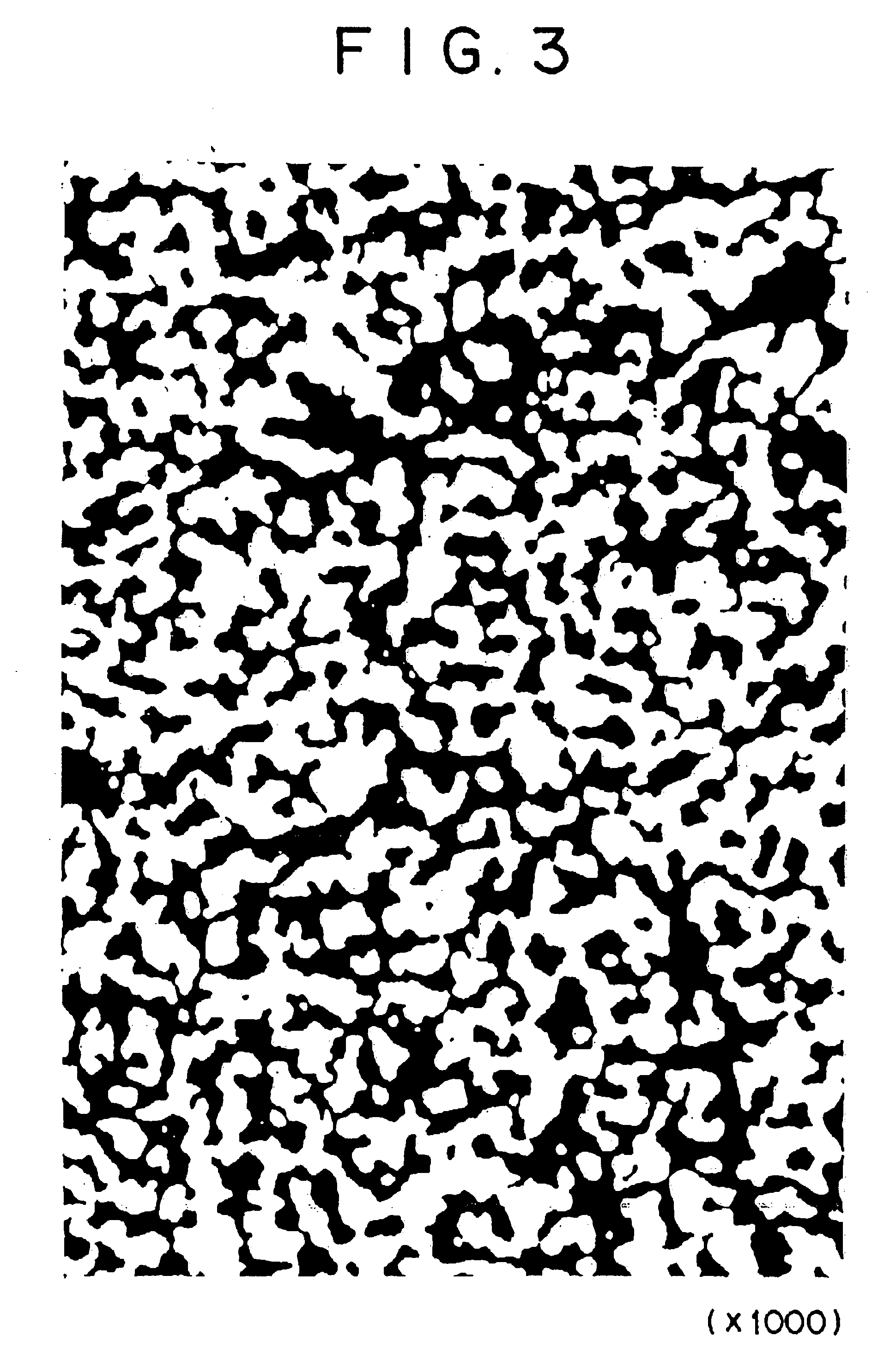Composite material including copper and cuprous oxide and application thereof
a technology of copper and cuprous oxide, applied in the field of composite materials, can solve the problems of heat evolution, malfunction, and inability to meet the radiator requirements of power semiconductor devices, and achieve the effect of low hardness
- Summary
- Abstract
- Description
- Claims
- Application Information
AI Technical Summary
Benefits of technology
Problems solved by technology
Method used
Image
Examples
example 2
The same procedure as in Example 1 was repeated except that mixing was carried out by using a V-mixer. There was obtained a sintered body composed of Cu and 55 vol % of Cu.sub.2 O. This sintered body was examined for microstructure, thermal expansivity, and thermal conductivity in the same way as in Example 1.
FIG. 2 is a photomicrograph (.times.300) of the sintered body composed of Cu and 55 vol % of Cu.sub.2 O. It is apparent from the photomicrograph that the microstructure contains Cu.sub.2 O particles greatly varying in size. Large Cu.sub.2 O particles are formed by coagulation during mixing in the V-mixer. The sintered body in this example is almost comparable in thermal expansivity and thermal conductivity to that of the same composition in which the Cu.sub.2 O phase is uniformly dispersed in the Cu phase. However, the measured values vary from one position to another. It is noted that Cu.sub.2 O particles are dispersed mostly in irregular shape as in FIG. 1 but they are in lar...
example 3
Raw material powders used in this example are electrolytic copper powder (with a particle diameter of 74 .mu.m or less) and CuO powder (with a particle diameter of 1-2 .mu.m and a purity of 3N). They were mixed to establish a composition of Cu and 22.4 vol % of CuO. The resulting mixture (300 g) was thoroughly mixed by mechanical alloying for 25 hours in a planetary ball mill (120 mm in diameter) containing steel balls (8 mm in diameter). The resulting mixed powder was placed in a mold, 80 mm in diameter, and cold-pressed under a pressure of 1000 kg / cm.sup.2. Thus there was obtained a preform. The preform was sintered in an argon atmosphere at 800.degree. C. for 2 hours. The resulting sintered body was examined for structure, thermal expansivity, and thermal conductivity in the same way as in Example 1. It was also tested by X-ray diffractometry.
FIG. 3 is a photomicrograph (.times.1000) of the microstructure of the sintered body. It is apparent from the photomicrograph that Cu.sub.2...
example 4
Raw material powders used in this example are the same those used in Example 1. They were mixed to establish a composition of Cu and 55 vol % of Cu.sub.2 O. The resulting mixture (550 g) was thoroughly mixed in a V-mixer. The resulting mixed powder was placed in a mold, 80 mm in diameter, and cold-pressed under a pressure of 600 kg / cm.sup.2. Thus there was obtained a preform measuring 80 mm by 22 mm. The preform was sintered in an argon atmosphere at 975.degree. C. for 3 hours. The resulting sintered body was heated to 800.degree. C. and forged (with a forging ratio of 1.8) using a 200-ton press. Forging was follows by tempering and annealing at 500.degree. C. The resulting product was examined for structure, thermal expansivity, and thermal conductivity in the same way as in Example 1.
The forged product was found to be satisfactory except for slight edge cracking. The copper composite material of the present invention is superior in plastic workability.
FIG. 4 is a photomicrograph (...
PUM
| Property | Measurement | Unit |
|---|---|---|
| thermal conductivity | aaaaa | aaaaa |
| particle diameter | aaaaa | aaaaa |
| thermal conductivity | aaaaa | aaaaa |
Abstract
Description
Claims
Application Information
 Login to View More
Login to View More - R&D
- Intellectual Property
- Life Sciences
- Materials
- Tech Scout
- Unparalleled Data Quality
- Higher Quality Content
- 60% Fewer Hallucinations
Browse by: Latest US Patents, China's latest patents, Technical Efficacy Thesaurus, Application Domain, Technology Topic, Popular Technical Reports.
© 2025 PatSnap. All rights reserved.Legal|Privacy policy|Modern Slavery Act Transparency Statement|Sitemap|About US| Contact US: help@patsnap.com



